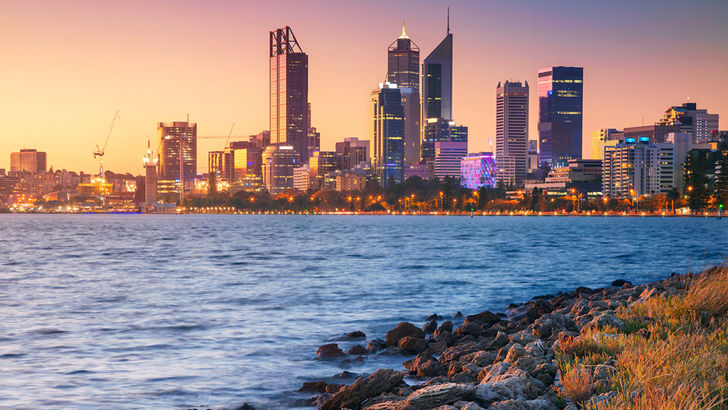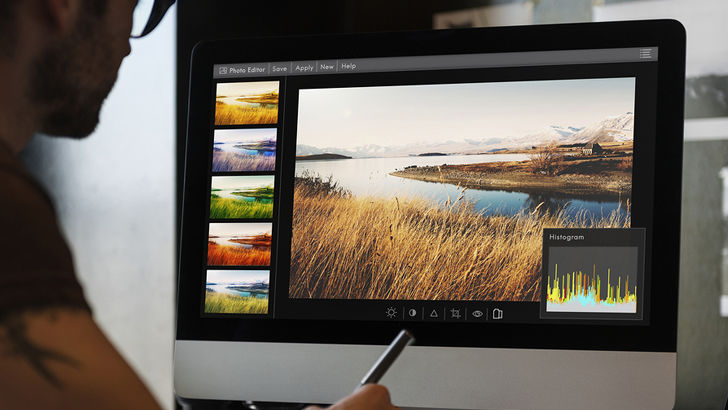How to earn extra cash from a stock photo side hustle
By Richard Scott
Earn a bit on the side by placing your photos with an online microstock agency
Calling all happy snappers. Ever considered turning your hobby into a reasonably profitable sideline? Not only are global "microstock" agencies open to submissions from amateur photographers but they'll pay you a fee for your efforts.
Having snapped away since 1955, Perth-based David Steele is a veteran accredited photographer and photojournalist who sells his work to online microstock agencies as a "useful supplement" to his income.
He specialises in travel, wildlife and nature photos, and he estimates a photographer can make between $US100 ($130) and $US250 a month for every 1000 images they have online.
But must you be a professional photographer to see any returns?
"I certainly think there's room for the amateur to profit," says Steele.
"It all depends on the technical and artistic quality of the image, the commercial potential and genre and, of course, the quantity of images you have with an agency."
More than half of his business is with Shutterstock, a US-based digital photo agency that lists upwards of 140 million images in its vaults and uploads an average of 150,000 new pieces of content daily.
"Anyone can apply to become a contributor," says Paul Brennan, Shutterstock's vice-president of content operations.
"You don't need a fancy camera or any additional equipment. We accept images taken with smartphones."
What exactly is microstock?
Stock photography refers to any generic image used to illustrate stories in newspapers and magazines, or in other publications such as advertisements, design or promotional materials, as opposed to an individually commissioned photograph.
The traditional "macrostock" agencies, like Getty, Alamy or Corbis, license an individual image to a client (for between $30 and $3000) with royalties paid to the photographer.
Microstock companies like iStock, Fotolia, 123RF and Shutterstock sell images for much less (around 20c to $10) on a royalty-free basis, paying the photographer once a quota has been reached.

What does it cost?
It costs nothing to register with most royalty-free agencies. In terms of equipment, you'll need to own a digital camera and perhaps a tripod.
According to Steele, you can pick up a perfectly respectable digital SLR (single-lens reflex camera) for around $400 secondhand.
"It doesn't necessarily have to be very expensive but good equipment always helps."
Additionally, you will need photo-editing software, such as Adobe Photoshop (from $145).
Am I qualified?
You must have an eye for what makes a good photo.
Your work must be in focus, correctly exposed and thoughtfully composed. But there are numerous websites, how-to guides and inexpensive classes to teach you the basics.
"I'm totally self-taught myself," says Steele. "I learnt about photography and composition through [photographic] magazines and annuals, seeing what was good about each photo and really trying to imitate them."
What should I shoot?
This is key. Your family holiday snaps are unlikely to be of commercial interest.
Some photos sell better than others, and some subjects, such as the Sydney Opera House, are photographed to death. It pays to study what's already online, suggests Steele.
"It's a good idea to know what you're up against," he says. "When looking at the quality of images, you can see the quantity as well."
Steele recommends paying particular attention to the holidays - images related to Easter, Christmas and Valentine's Day - as well as taking advantage of subjects on your doorstep.
"If you live in Perth, for instance, try and tick off all the subjects in that city, the amazing coastlines and forests, and submit those."

How do I submit?
Most agencies will ask you to submit a portfolio of your work. Shutterstock, for instance, asks first-time users to present a batch of 10 original images to be appraised by a team of reviewers. If one or more is accepted, you will be called upon to contribute, says Brennan.
"With any image that gets rejected, the contributor will receive specific feedback about the reason and encouragement to re-submit the image after making improvements."
You'll also need to include a brief description for each image and list between 25 and 50 keywords for search purposes.
What will be rejected?
Generally, there are two areas that will see your submission vetoed, says Brennan.
"The first is the technical quality of how the photo was taken. [Shutterstock] looks for excessive 'noise', poor focus or lighting conditions, and distracting compositions. Secondly, we look for any trademarks such as brand names or logos."
An agency cannot license an image commercially if it contains someone else's intellectual property, and this may include specific architectural and furniture designs. Images that include people may require a relevant model-release form; images of street art and graffiti may need a property release from the artist. Always check an agency's terms and conditions.

How do I pick an agency?
Since microstock agencies don't demand exclusivity, there's nothing to stop you working with multiple agencies, says Steele.
"The beauty of a royalty-free agency is that, basically, no one can have exclusive rights on a photograph, so that one photo can be sold again and again and again. Whereas previously you got a really good price but you didn't sell so many."
How much can I make?
Steele estimates a user can stand to make about $US1 a month per image used. Video clips (between 10 and 20 seconds) pay much better than stills, at an average of $US20 a clip.
"Stock imagery is a long-term investment - a volume game," says Brennan. "The more images you have in the collection, the more they can be found and chosen.
People are making money on images they took seven to 10 years ago. Small amounts of extra income can turn into something more substantial over time."
Who does it suit?
Aside from the professional looking to make a little extra on the side, microstock suits the amateur or semi-pro seeking a "creative outlet to make some money and to gain more exposure for their work", says Brennan.
Steele estimates that a photographer would have to reach a target of around 6000 high-selling images before it became truly lucrative.
"That could be difficult to reach if you had a full-time job, young children or other interests. But, on the other hand, the good news is that even if you were to stop, those photos are still there and continue to keep on earning."

'Better off doing it myself'
Pat Leygo, 31, a creative director and digital artist from Sydney, has only been taking photos for the past four years and submitting to stock agencies for the past two.
Initially, using a Canon PowerShot G10 ($500), he picked up photography as a means of saving money in his design work.
"I didn't want to buy stock photos off anyone or to pay a premium for a photographer to do it. I thought I'd be better off just doing it myself," he says.
He ended up doing some work at a Sydney studio taking stock photos to order for agencies, which gave him an insider's look into how stock agencies work and what sells.
Building up a small portfolio, he began selling his own photos to Shutterstock and small graphic design agencies like Freepik, making a "few hundred, not a lot" along the way. He estimates he's made just under $1000 since 2015.
While he doesn't think a photography background is essential, he recommends doing your homework in terms of submission guidelines, image rights and licensing.
"There's a lot of technical stuff that you'll need to learn first - composition, sizing and usage rights especially," Leygo says.
"But, honestly, anybody can pick up a camera and submit. And if they want to, they should."
Get stories like this in our newsletters.



